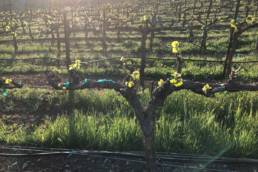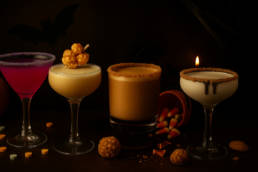Librandi Wine Tasting
Librandi Wines
Background
Italy has long been known for its more “prestigious” wine regions. Even the Italian wine neophyte has some familiarity with the regio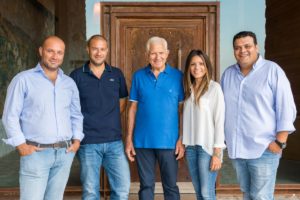 ns of Piedmont, Tuscany and maybe even Veneto. Granted there are some spectacular wines produced in these areas, but this vast and diverse country has so much more to offer.
ns of Piedmont, Tuscany and maybe even Veneto. Granted there are some spectacular wines produced in these areas, but this vast and diverse country has so much more to offer.
Industrialization of the southern regions has lagged behind compared to their northern counterparts. Likewise, the wines were more thought of as “bulk”, with importance placed more on quantity rather than quality. In the modern era, nothing could be further from the truth. In these unsuspecting regions, the focus on quality and preservation of ancient indigenous varieties has given a resurgence to these wines.
This out-of-date viewpoint of the southern Italian regions plays to the advantage of the consumer. One can buy these wines drinking well above their price point but also with truly unique varieties that are planted little, if at all, anywhere else in the world. Wine geeks and novice aficionados alike can both appreciate these misunderstood regions.
The Winery
I was recently treated to a tasting by one such producer, Librandi, from Calabria, Italy; the “toe of the boot.” In the early 1950’s, less than a decade after the Kingdom of Italy became a democratic republic, Antonio and Nicodemo Librandi began bottling in a small winery in Via Tirone, Cirò Marina. Two years later they acquired an estate in the Ponta area, currently called Duca Sanfelice.
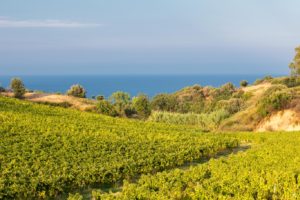 Over the next few decades, the company purchased additional land holdings, modernized their winemaking and expanded their brand. Along with this, they forwarded their sustainability philosophy of increased accountability for stewardship of the land. Decreasing the pesticide use, installation of photovoltaic cells and switching to lighter wine bottles are just a few of their projects in an attempt to make wine more responsibly over their 6 proprietary estates and 230 hectares (568 acres).
Over the next few decades, the company purchased additional land holdings, modernized their winemaking and expanded their brand. Along with this, they forwarded their sustainability philosophy of increased accountability for stewardship of the land. Decreasing the pesticide use, installation of photovoltaic cells and switching to lighter wine bottles are just a few of their projects in an attempt to make wine more responsibly over their 6 proprietary estates and 230 hectares (568 acres).
Although I am a big advocate of being more environmentally responsible as well as being a sucker for a good story, the wine still has to show out. The six wines that I was so graciously permitted to sample were anything but a disappointment. They all met or exceeded my expectations, drinking above their respective price points. Thankfully, most consumers have not caught on yet to these hidden gems, but when they do, the demand and prices will certainly rise. I recommend you trying them for yourself and casually slipping them in for your wine-loving friends to taste. They will always remember that you were the savvy consumer that taught them to drink ahead of the curve.
The Wines
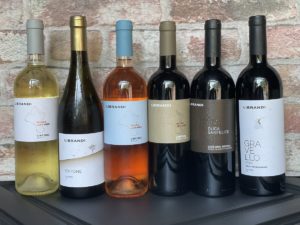
Segno Librandi Cirò Bianco 2022 DOC Cirò $16
Produced from single-variety Greco Bianco grapes (most planted white grape in Calabria), this wine shows aromas of peach, peach and citrus blossom, and fresh cut leafy herbs; general “fresh” overall feeling on the nose. The palate has a dry perception but 4 g/L residual sugar. This help to broaden and soften the acidity, add some viscous textural mouthfeel, and keep the final alcohol a little more in check. The flavors mirror the nose with more slant toward brined citrus. The wine finishes with that same brined note that seems to beg for ocean fare (prawn risotto).
Critone 2023 IGT Calabria $20
Critone was a favorite pupil of the great philosopher, Socrates, and represents Librandi’s constant pursuit of the knowledge to produce better wines. International varieties are represented here with a composition of Chardonnay (90%) and Sauvignon Blanc (10%). The nose boasts of orchard fruit nectar (peach, apple), grass clippings, with a slight floral / blossom note. The palate has a perception of dry with a classic Sauvignon Blanc acid structure that persists to the finish. Flavors of orchard fruit are slightly surpassed by tangerine citrus. One can easily see how this remains one of their most popular white wines. Although a great poolside sipper, I will be trying this with both seafood ceviche and lemon sole.
Segno Librandi Cirò Rosato 2023 DOC Cirò $18
This direct press rosato (rosé) is made from the single-variety Gaglioppo grape. As the most important red grape in the region, Gaglioppo has a parent offspring relationship with Sangiovese and was found to be a sibling to Frappato from Sicily. The wine has a nose of cherry, strawberry, floral (rose petal), and a slight leafy note. The palate has a crunchy, fresh acidity and an elegant mouth feel. The red fruit carries through from the nose along with more of the woody herbal elements. I find this incredibly easy to pour in my gob with delightful disregard but will also pair it with grilled shrimp.
Segno Librandi Cirò Rosso 2021 DOC Cirò $15
This 100% Gaglioppo sees 5 days of skin contact and is aged in stainless steel for 1 year. The wine has aromas of berries (strawberry, elderberry, cranberry), woody herbs (thyme) and a slight floral note. The palate is dry with a tart acidity, and a lighter body. There are flavors of red fruit and berry with the same woody culinary herb note. The tannins are fine grained and have a dusty texture. Pair with grilled sausages, pomodoro, or a cured meat charcuterie tray.
Duca San Felice 2021 Doc Cirò $20
This Gaglioppo wine originates from 40-year-old head-trained vines, spends 10 days on the skins and 30 months aging in stainless steel followed by 6 months in bottle before release. The nose has deep fruit aromatics of black currant, fig, dried cherries, moist pipe tobacco and unsweetened baking chocolate. The flavors re-emerge on the dry palate, with a slightly dusty and grippy tannin structure. Food would be this wine’s best friend especially with porchetta or lamb chops.
Gravello 2020 IGT Calabria $30
As this wine takes the indigenous Gaglioppo (60%) and the international Cabernet Sauvignon (40%) some refer to it as a “Super Calabrian.” The grapes see 15 days maceration, 8 to 12 months in French oak (1/3 new) followed by 6 months in bottle before release. The nose is rich and seductive with aromas of blackberry, blueberry, coffee (torrefaction), cassis and stewed plum. The dry palate has well integrated velvet textured tannins and a dance of the aforementioned elements (fruit with roasted coffee and cacao beans) dancing in one’s mouth. Truly a delight. Pair with beef wellington or duck breast with wild mushrooms.

